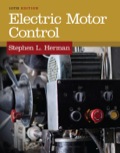
Electric Motor Control
10th Edition
ISBN: 9781305177611
Author: Herman
Publisher: Cengage
expand_more
expand_more
format_list_bulleted
Textbook Question
Chapter 32, Problem 6SQ
Describe the operation of Figure 32–5 (B) by adding jumper wire “A” to the original circuit.
Expert Solution & Answer
Want to see the full answer?
Check out a sample textbook solution
Students have asked these similar questions
consider the circuit below. Assume it uses ideal diodes with the details specified above. the left side of the circuit is basically a wheatstone bridge, hooked to the right side, which is a differential op amp. a) what is the voltage between junctions "A" and "B" if R2 is 201 ohms? b) what are the minimum and maximum values of R2 can be without the op amp hitting saturation?remember that for the diodes to be ideal you they have to have a turn on voltage of 0.6 volts.
The capacitors in the circuit shown below have no energy stored in them and then switch “S1” closes at time t=0. Assume the ideal op amp does not saturate. As stated above assume the diodes are ideal with parameters specified above.
Diodes are at 0.6 Volts
Show the derivations of the mathematical equations for v(t) at Locations A and B for t≥ 0
Phase (deg)
Magnitude (dB)
-20
-40
-60
-80
-100
°
-90
-180
-270
10-1
(i)
°
Problem 5
Consider a unity (negative) feedback system with a proportional controller. The Bode plot of the
plant transfer function G(s) is given as below.
System: sys
Frequency (rad/s): 1
Magnitude (dB): 13.9
System: sys
Frequency (rad/s): 14.9
Magnitude (dB): 6.58
System: sys
Frequency (rad/s): 1
Phase (deg): -9.76
10°
System: sys
Frequency (rad/s): 25.6
Magnitude (dB): -0.0703
System: sys
Frequency (rad/s): 41.3
Magnitude (dB): -8.06
System: sys
Frequency (rad/s): 200
Magnitude (dB): -44.4
System: sys
Frequency (rad/s): 14.9
Phase (deg): -110
System: sys
Frequency (rad/s): 25.6
Phase (deg): -148
System: sys
Frequency (rad/s): 41.3
Phase (deg): -180
System: sys
Frequency (rad/s): 200
Phase (deg): -247
101
Frequency (rad/s)
102
Find the gain crossover frequency, phase crossover frequency, gain margin and phase
margin of the system. Is the closed-loop system stable?
(ii)
What is the steady-state error of the…
Chapter 32 Solutions
Electric Motor Control
Ch. 32 - Prob. 1SQCh. 32 - Prob. 2SQCh. 32 - What will happen if terminals T5 and T6 in Figure...Ch. 32 - Is the motor operating at high speed or low speed...Ch. 32 - Describe the operation of the line diagram in...Ch. 32 - Describe the operation of Figure 325 (B) by adding...Ch. 32 - In Figure 327, the motor cannot be started in high...Ch. 32 - Prob. 8SQ
Knowledge Booster
Learn more about
Need a deep-dive on the concept behind this application? Look no further. Learn more about this topic, electrical-engineering and related others by exploring similar questions and additional content below.Similar questions
- Problem 1 Consider the following system. In the figure, y(t) denotes the voltage across the capacitor. u(t) 1+ R W L + 0000 y(t) C Y(s) (i) Find the transfer function H(s): = of the system. U(s) Now suppose, R 10 KQ, L = 0.5 mH and C = 10 μF. (ii) Find the poles and zeros. Is the system BIBO stable? (iii) Compute settling time, rise time, peak time and % overshoot of the step response of the system. What the steady-state output for unit step input?arrow_forwardA 3-phase, 52 H.P, 50 Hz, 6-Pole, Y- connected induction motor runs at a speed of 980 rpm.The motor is supplied from 380 V mains and it takes a rated current of 80 A at 0.8 p.f. If the total stator losses are 1.7 kW, determine: the air-gap power, rotor copper loss, friction and windage losses?arrow_forwardelectric plants do hand writingarrow_forward
- please solve quickly. thank you!arrow_forwardPlease show all stepsarrow_forward12-3) PDF, mean, & variance A random variable has the PDF shown in the figure. a) Find the numerical value of the parameter K. b) Write the numerical expression for the PDF. c) Find the probability that the random variable is negative. d) Find the mean of x, the expected value of x², and the variance of x. K Px(x) 3 Xarrow_forward
- Please show all stepsarrow_forward12-4) Gaussian random variable A Gaussian random variable has a mean value of 4 and a standard deviation of 3. Find the probability that the value of the random variable exceeds 16. Repeat for the probability that it is less than -2. The discussion of Marcum's Q function given in the lecture notes may be helpful.arrow_forwardA transformer has a primary voltage of 240 V and a secondary voltage of 48 V. What is the turns ratio of this transformer?arrow_forward
arrow_back_ios
SEE MORE QUESTIONS
arrow_forward_ios
Recommended textbooks for you

Introduction to Logic Gates; Author: Computer Science;https://www.youtube.com/watch?v=fw-N9P38mi4;License: Standard youtube license